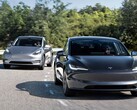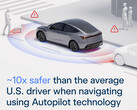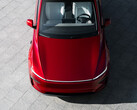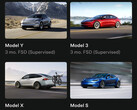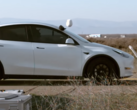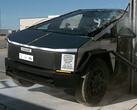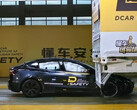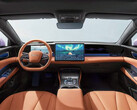Recently, a Mark Rober test that pitted a Tesla running on Autopilot against an award-winning Lexus autonomous driving system that uses LiDAR painted Tesla's camera-only solution in unflattering light.
His setup, however, was apparently so fraught with inconsistencies that a coterie of independent testers tried to put a Tesla through similar scenarios to replicate or rebut the conclusions.
In the latest installment of one such fake Wile E. Coyote road wall test, a Model Y with the modern Hardware 4.0 FSD set was pitted against an older Model Y with the Hardware 3.0 edition that is still way more prevalent on US public roads.
The 2022 Model Y had a HW3 kit running on the latest version of Tesla's FSD software for that particular set of cameras and computer, while the 2024 Model Y had the new HW4, or AI4 set, as Tesla now calls it.
The HW3 Model Y failed the test indeed, as it didn't see the wall with fake painted road on it, and went right through. The testers repeated the sequence two times when they had to slam on the brakes themselves, and one last time when they simply let the 2022 Model Y smash through the fake wall in the middle of the road while in FSD mode.
The 2024 Model Y with a HW4 set of high-res cameras and a newer FSD computer, however, saw the fake wall each time, and automatically stopped the Tesla that was hurtling towards it in self-driving mode way before the obstacle. A similar test was done with the Cybertruck, which also sports the latest HW4 kit, and the electric pickup didn't hit the wall, either.
Tesla is now on the cusp of testing its unsupervised FSD mode that doesn't require a driver present or paying attention, starting this June in Austin, Texas. Its autonomous driving team just posted that it has been getting the necessary pilot program testing permit by depicting city officials sitting in a Cybercab.
"Thanks to Austin City & Texas DOT for hosting & supporting our efforts to unlock safe & low-cost premium point-to-point electric transport," said the team, indicating that the June launch for unsupervised FSD there is a go.
Just as Tesla hasn't yet gotten the newest FSD version to work on older vehicles with HW3 kit, however, it might not be able to make unsupervised FSD work on them in a satisfactory manner, too. In that case, promised Elon Musk, Tesla will retrofit HW4 computers in eligible HW3 vehicles and eat the costs.
The Wile E. Coyote wall testing scenario below shows that a HW3 computer retrofit campaign might be inevitable further down the fake painted road indeed.
Get the 80A Tesla Gen 2 Wall Connector with 24' cable on Amazon
Source(s)
Kyle Paul (X)





